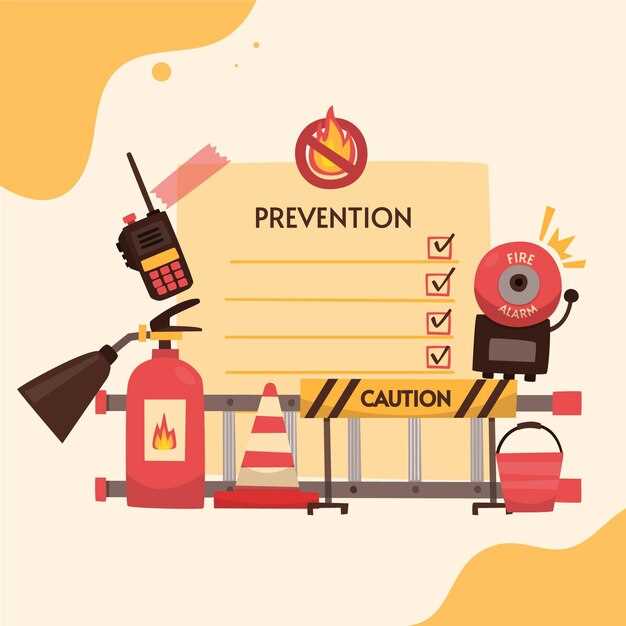
In any emergency situation, the importance of an effective response cannot be overstated. The medical team plays a crucial role in ensuring that incidents are managed swiftly and efficiently. Understanding the established protocols is vital for all personnel involved in emergency management, as it can significantly impact the outcome of a crisis.
This article aims to clarify the components of incident emergency response protocols, detailing the specific actions that the medical team must undertake when a situation escalates. Utilizing a flag system can enhance communication and coordination among team members, streamlining the response process and allowing for quicker patient assessment and treatment.
By delineating the key steps and responsibilities within these protocols, we can ensure that all responders are equipped with the necessary knowledge to act effectively during emergencies. In the face of any incident, having a well-prepared medical team can make all the difference.
Understanding Role Assignments within the Medical Team
In emergency response scenarios, the medical team plays a critical role in managing patient care and ensuring effective operations. Each member of this team must understand their specific assignments to function efficiently within the established system. Proper role assignments help streamline workflows, improve communication, and ultimately enhance patient outcomes.
The medical team is typically divided into various roles such as triage officers, medical responders, and support staff. Each role is integral to the success of the incident response. The triage officer is responsible for assessing and prioritizing patient needs, effectively flagging critical cases that require immediate attention. This role requires a high level of expertise and the capacity to make quick decisions under pressure.
Medical responders are tasked with providing direct patient care, administering treatment, and stabilizing individuals in crisis situations. This team must work in concert, using a shared system to ensure that information is communicated clearly and promptly. Coordination among team members allows for efficient management of resources, ensuring that care is delivered where it is most needed.
Support staff, including logistics coordinators and communication specialists, play vital roles behind the scenes. They facilitate the smooth operation of the medical response, managing supplies, and keeping lines of communication open. An efficient support system allows medical responders to focus on patient care without being distracted by logistical concerns.
In summary, understanding role assignments within the medical team is essential for effective incident emergency response. Clear delineation of responsibilities not only enhances team performance but also ensures that patient care is prioritized in chaotic environments. Each member must be aware of their role and the roles of others, creating a cohesive team prepared to handle emergencies.
Implementing the Flag System for Incident Prioritization

The Flag System serves as a critical framework for prioritizing incidents during emergency response scenarios. This system allows teams to quickly assess and categorize incidents based on their severity and required medical attention. By implementing the Flag System, responders can streamline their decision-making process and allocate resources more effectively.
Each incident is assigned a color-coded flag, representing its urgency. For instance, red flags denote life-threatening situations that necessitate immediate medical intervention, while yellow flags indicate serious, yet less urgent, issues that still require prompt attention. Green flags are used for minor injuries or incidents that can be addressed later. This clear categorization helps teams prioritize responses, ensuring the most critical cases receive immediate care.
An effective implementation of the Flag System necessitates comprehensive training for the response team. Each member must understand the criteria for flag classification and the importance of rapid assessment. Regular drills simulating various incident scenarios can reinforce these skills and improve overall team cohesion during actual emergencies.
Furthermore, real-time communication is essential for the Flag System’s efficacy. Ensuring that all team members are informed of the flagged incidents through a centralized communication system allows for coordinated responses and resource management. Utilizing technology, such as mobile applications, can enhance this process by providing instant updates on incident status and flag changes.
In summary, the Flag System is an invaluable tool for enhancing incident prioritization. By training teams effectively, maintaining communication, and utilizing a clear categorization process, organizations can improve their emergency response capabilities, ultimately saving more lives through timely medical intervention.
Steps for Communicating During a Medical Emergency

Effective communication is crucial in a medical emergency to ensure rapid response and appropriate care. Here are essential steps to follow:
- Assess the Situation
- Quickly evaluate the condition of the patient.
- Identify any immediate dangers to yourself and the team.
- Utilize Clear Signals
- Use flags or other visual indicators to alert others of a medical emergency.
- Make eye contact and use hand gestures to direct the team.
- Contact Emergency Services
- Call emergency services with precise information about the situation.
- Provide the location, nature of the medical emergency, and the number of individuals involved.
- Relay Information to the Medical Team
- Briefly describe the patient’s symptoms and any known medical history.
- Keep communication lines open and be prepared to answer any questions from the medical team.
- Coordinate with On-Site Personnel
- Assign roles within your team to manage different aspects of the emergency response.
- Ensure everyone understands their responsibilities for a coordinated effort.
- Document the Incident
- Keep a record of the timeline of events, actions taken, and communications made.
- This documentation can assist medical teams and improve future response efforts.
By following these steps, you can help facilitate effective communication during a medical emergency, ensuring that the patient receives timely and appropriate care.



